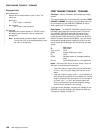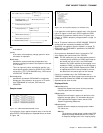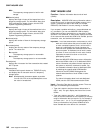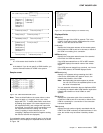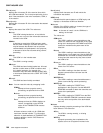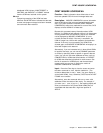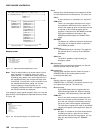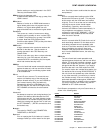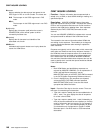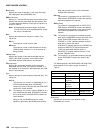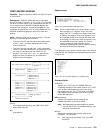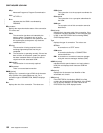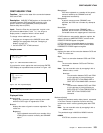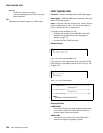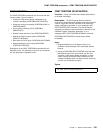CEMT INQUIRE UOWENQ
Rlsaccess
displays whether the data set was last opened in this
CICS region in RLS or non-RLS mode. The values are:
RLS The last open in this CICS region was in RLS
mode.
NOtrls
The last open in this CICS region was in non-RLS
mode.
Sysid(
value
)
displays the 4-character sysid (when the cause is
CONNECTION) of the remote system to which
connectivity has been lost.
UOw(
value
)
displays the 16-character local identifier of the
associated unit of work.
UOWDsnfail
indicates that this panel relates to an inquiry about the
cause of a UOW failure.
CEMT INQUIRE UOWENQ
| Function: Retrieve information about enqueues held or
| waited on by a UOW, or about UOWs holding or waiting on a
| specified enqueue.
Description: INQUIRE UOWENQ returns information
about the enqueues held by a UOW. Enqueues are used by
CICS to lock recoverable resources such as file records or
queues to the UOW that is updating them. User enqueues
obtained by the EXEC CICS ENQ command are also
returned.
You can use INQUIRE UOWENQ to indicate which records
and queues would be affected if the UOW were forced.
The transaction also returns information about UOWs that
are waiting on the enqueues. This enables you to diagnose
enqueue deadlocks between tasks wanting to update the
same resources.
Enqueues are typically held in active state, which means that
other tasks are allowed to wait for the enqueue. However, if
the UOW that owns the enqueue suffers an in-doubt failure,
the enqueue is usually converted to the retained state until
the in-doubt failure can be resolved. INQUIRE UOWENQ
also retrieves information about these enqueues and can be
used to identify which records and queues would be affected
if the UOW were forced.
Notes:
1. Both UOW-lifetime and task-lifetime enqueues are
returned by INQUIRE UOWENQ. (For an explanation of
UOW- and task-lifetime enqueues, see the
MAXLIFETIME option of the EXEC CICS ENQ command
in the
CICS System Programming Reference
manual.)
2. On an in-doubt failure, user enqueues are released,
unless
the EXEC CICS ENQ command specified
MAXLIFETIME(TASK) and it is not the end-of-task
syncpoint that suffers the failure.
Input: Press the Clear key to clear the screen. There are
two ways of commencing this transaction:
Type CEMT INQUIRE UOWENQ (the minimum abbreviation is
CEMT I UOWE). You get a display that lists all enqueues
for all the current UOWs.
Type CEMT INQUIRE UOWENQ (CEMT I UOWE) followed by as
many of the other attributes as are necessary to limit the
range of information that you require. So, for example, if
you enter cemt i uowe d, the resulting display will show
you the details only of enqueues on records in VSAM
data sets open in non-RLS mode or CICS-maintained
data tables.
148 CICS Supplied Transactions



